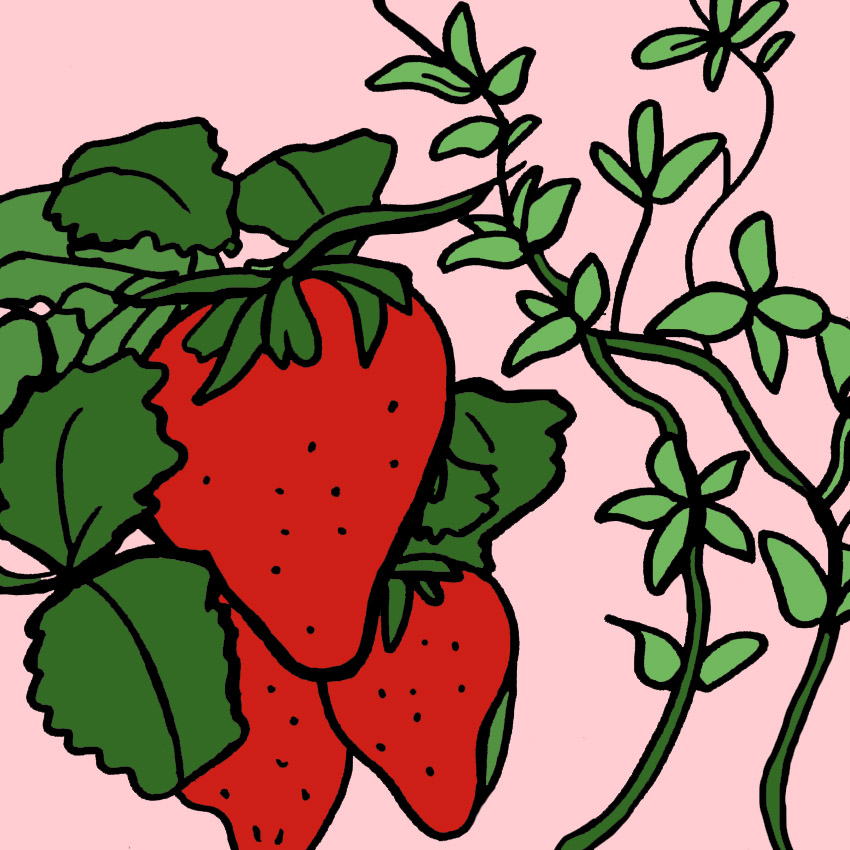If you love gardening, there's a good chance you're already familiar with the concept of "companion planting."
In companion planting, you create a garden that uses the different assets of the plants to help create a more stable little ecosystem.
Essentially, you harness the power of the different plants to help offset the need to use chemicals, such as pesticides, or additional support, like stakes for growing vines.
After all, gardening is already about creating harmony between society and nature. Wouldn't it be even better if we could make the actual garden itself more harmonious too? For example, you might want to grow beautiful flowers, but are worried because caterpillars love to snack on the blooms. If you can find another plant to grow nearby that naturally repels the caterpillars, you have an awesome, mutually beneficial relationship growing in your garden.
It's much better for the plants and wildlife to have a solution that protects plants without adding any chemicals to the garden!
Scroll through below to see a few of our favorite pairings!
Photo Credit: Flickr / Tony Austin / Wikimedia Commons
Roses + Garlic

It might seem counterintuitive to plant the sweet-smelling rose next to the notoriously stinky garlic, but it's actually more logical than you would think!
Garlic plants repel pests that like to snack on rose petals and leaves, so planting garlic low down around your rosebushes can protect them from predators.
Also, it's worth noting that the garlic plant doesn't smell like much, and it actually encourages the roses to produce a stronger scent.
Besides, it grows pretty purple flowers that actually look beautiful next to roses!
Potatoes + Alyssum

Potatoes are one of the most important staple foods in the world, so it's important that we try to keep our crops healthy.
If you have potatoes growing in your vegetable garden, you can contribute to the cause by planting a border of alyssum around the edges of the plots.
Alyssum is a low-lying flower with sweet-smelling, white blossoms. Bees and other pollinators love it, which means that they'll come help pollinate the less-enticing potato plants too. It's a win-win!
Lettuce + Lupin

The lupin is a tall, majestic flower that loves to grow wild in sandy soil.
Because the lupin gets so much height, it makes for a great garden companion for low-lying plants that need dappled sunlight.
Lettuce gets fried if it gets too much direct light, so growing rows of lettuce alongside a row of lupin will give the veggie the partial shade it prefers.
It's worth noting that lupin really pairs well with all veggies, because it's a legume that fixes nitrogen in the soil, which helps plants grow.
Corn + Beans

The classic companion-planting pairing is corn and beans.
Native Americans historically used a gardening technique called the Three Sisters, which paired beans, corn, and pumpkin vines.
Beans and corn pair particularly well because the beans can climb up the cornstalks to get partial light. but more importantly, these two plants balance the soil: corn depletes nitrogen and beans fix it.
If you decide to add pumpkins as well, you'll notice that they flourish in the partial shade created by the corn.
Cabbage + Tomatoes

Tomatoes are a member of nightshade family. Nightshade is poisonous in some forms, like belladonna, but delicious in others, like tomato and eggplant.
Though humans might enjoy tomatoes, the same cannot be said for cabbage worms, which find the leaves and fruit of the tomato repellent.
If you grow cabbage and tomatoes side by side, you'll find that cabbage worms have a much harder time snacking on your crops.
Melon + Marigold

Melons and marigolds love living side by side! That's because marigolds ward off nematodes, or round-worms, which love to infest melons and other gourds.
If you have a long growing season, try growing marigolds and melons together in the same plot.
They may not be flowering and fruiting at the same time, but they will still benefit from the companionship.
If you have a shorter season, grow marigolds one year, and then melons the next. The nematode protection will last!
Broccoli + Rosemary

Rosemary is a pungent, medicinal herb that is more likely to grow in a kitchen herb garden than in your vegetable beds.
This year, you might want to make an exception. The evergreen rosemary grows into a dense, bushy ground cover that can help protect your broccoli crop from unpleasant insect activity.
Even better, the aromatic rosemary scent seems to improve the taste of broccoli and make it less bitter.
Cucumber + Nasturtium

We've talked a lot about plants that repel insects, but gardeners should plant cucumber and nasturtium together to attract insects.
The bright, lacy nasturtium plant is a great habitat for predatory creatures like ladybugs and earwigs, as well as for spiders.
All of these creatures just love chowing down on aphids, caterpillars, and other vegetarian insects who enjoy eating up cucumbers.
Nasturtium also makes for a great companion plant for other vulnerable veggies too!
Strawberry + Thyme

Homegrown strawberries are delicious, but it can be tough to get them to thrive, especially if you live in a slightly colder climate.
Fortunately, you can help strawberries grow and produce more fruit by planting some thyme alongside them.
Thyme is a great pollinator, especially for honeybees, so it will encourage bees to visit your strawberries too.
If you happen to keep bees on the same property, their honey will be extra scrumptious!
Have you ever tried companion planting in your garden?
Let us know and don't forget to SHARE with fellow green thumbs!




